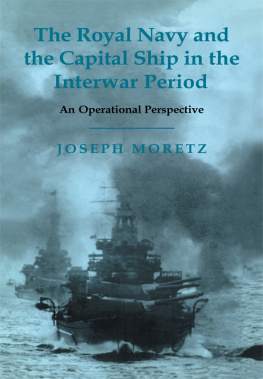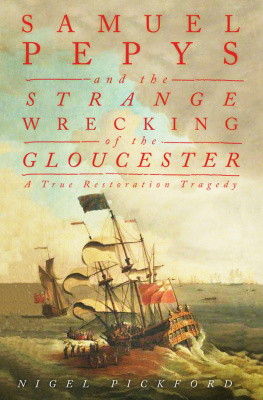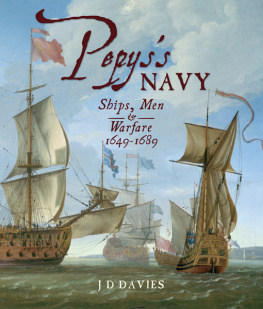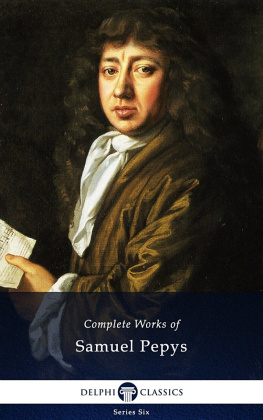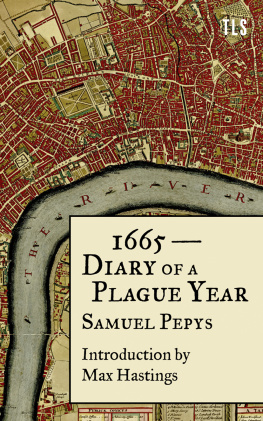CAMBRIDGE UNIVERSITY PRESS
C. F. CLAY, Manager
LONDON: FETTER LANE, E. C. 4
NEW YORK: G. P. PUTNAM'S SONS
BOMBAY }
CALCUTTA } MACMILLAN AND CO., Ltd.
MADRAS }
TORONTO: J. M. DENT AND SONS, Ltd.
TOKYO: MARUZEN-KABUSHIKI-KAISHA
ALL RIGHTS RESERVED
SAMUEL PEPYS
AND THE
ROYAL NAVY
LEES KNOWLES LECTURES DELIVERED
AT TRINITY COLLEGE IN CAMBRIDGE,
6, 13, 20 and 27 NOVEMBER, 1919
BY
J. R. TANNER , Litt.D.
FELLOW OF ST JOHN'S COLLEGE
CAMBRIDGE
AT THE UNIVERSITY PRESS
1920
PREFACE
In 1919 the writer was appointed by the Master and Fellows of Trinity College, Cambridge, Lees Knowles Lecturer in Military and Naval History for the academical year 1919-20, and the lectures are now printed almost exactly in the form in which they were delivered in November, 1919.
The object of the Lecturer was to present in a convenient form the general conclusions about the administration of the Royal Navy from the Restoration to the Revolution arrived at in the introductory volume of his Catalogue of Pepysian Manuscripts, published by the Navy Records Society in 1903 with a dedication, in the two hundredth year after his death, 'to the memory of Samuel Pepys, a great public servant.' The evidence there collected shews that Pepys, familiar to the last generation in the sphere of literature, was also a leading figure in an entirely different world, who rendered inestimable services to naval administration in spite of the peculiar difficulties under which he worked. These conclusions, with a part of the evidence on which they depend, are summarised in the present volume.
Thanks are due to the Master and Fellows of Trinity College for encouraging the enterprise; to the Council of the Navy Records Society for permission to use the material already published in the Society's series; to the Delegates of the Oxford Clarendon Press for allowing the author to use and quote from his Introduction to the reprint of Pepys's Memoires of the Royal Navy, 1679-88, issued in the Tudor and Stuart Library in 1906; and to Messrs Sidgwick and Jackson for a similar permission to use the Introduction to the section on 'Sea Manuscripts' in Bibliotheca Pepysiana.
J. R. T.
February, 1920.
LECTURE I
INTRODUCTORY
The materials for the administrative history of the Royal Navy from the Restoration to the Revolution are largely contributed by Cambridge.
The section of the Pepysian Library at Magdalene which Samuel Pepys classified as 'Sea Manuscripts' contains 114 volumes, the contents of which cover a wide field of naval history. Pepys's leading motive in collecting these is probably to be found in his projected 'History of the Navy.' Early in his career he thought of writing a 'History of the Dutch War,' 'it being a thing I much desire, and sorts mightily with my genius.' Later on the design expanded into a complete naval history, upon which, at the time of his death, he was supposed to have been engaged for many years. Evelyn writes in his Diary on 26 May, 1703: 'This day died Mr Samuel Pepys, a very worthy, industrious, and curious person, none in England exceeding him in knowledge of the navy.... He had for divers years under his hand the History of the Navy, or Navalia as he called it; but how far advanced, and what will follow of his, is left, I suppose, to his sister's son.' Pepys's correspondence with Evelyn and Sir William Dugdale suggests that it would have included in its scope the antiquities of the Navy and possibly the history of navigation, as well as administrative history; and this view is supported by his selection of 'sea' manuscripts for his Library.
These manuscripts may be roughly classified in three groups:
(i) Official documents of Pepys's own time, the presence of which in the Library may be explained by the predatory habits of retiring officials in his day. Among these are to be found collections of real importance for the administrative history of the navy during his time, such as (1) Naval and Admiralty Precedents from 1660 to 1688described as 'a collection of naval forms and other papers, serving for information and precedents in most of the principal occasions of the Admiralty and Navy calling for the same'; (2) Admiralty Letters, 14 volumes containing the whole of the ordinary correspondence which passed out of Pepys's office during his two Secretaryships, 1673-1679 and 1684-1688the equivalent of the modern letter-copying books, but in those days transcribed afresh with laborious care by a staff of clerks; (3) the Admiralty Journal, the minute-book of the Commission of the Admiralty from 1674 to 1679; (4) Naval Minutes, a volume in which Pepys made miscellaneous memoranda, many of them notes for his projected History; and (5) the Navy White Book, in which he noted abuses in shorthand, and wrote down what he called 'matters for future reflection' arising out of the Second Dutch War.
(ii) A second group of papers consists of official and unofficial documentsmany of them acquired or copied at some expensebrought together deliberately in order to serve as material for the projected 'History of the Navy.' These include (1) a copy of Sir William Monson's Naval Discourses; (2) copious extracts from naval authorities and historians carefully indexed; (3) Penn's Naval Collections, being 'a collection of several manuscripts, taken out of Sir William Penn's closet, relating to the affairs of the Navy'; (4) various volumes relating to shipbuilding and navigation, including the curious and valuable work entitled Fragments of Ancient Shipwrightry and Sir Anthony Deane's Doctrine of Naval Architecture. This last contains delicate and elaborate drawings of a ship of each rate, and Evelyn records in his Diary under date 28 January, 1682, the remarkable impression which a sight of it made upon him: 'Mr Pepys, late Secretary to the Admiralty, showed me a large folio containing the whole mechanic part and art of building royal ships and men-of-war, made by Sir Anthony Deane, being so accurate a piece from the very keel to the lead block, rigging, guns, victualling, manning, and even to every individual pin and nail, in a method so astonishing and curious, with a draught, both geometrical and in perspective, and several sections, that I do not think the world can shew the like. I esteem this book as an extraordinary jewel.' There also falls into this group (5) the large and important collection in eleven volumes entitled by Pepys A Miscellany of Matters Historical, Political, and Naval. This contains copies of 1438 documents, transcribed from various sources, and ranging from a complete copy in 114 folio pages of Sir Philip Meadows's work on the Sovereignty of the Seas down to 'A true Copy of the Great Turke his Stile which he most commonly writeth in His great Affaires.' They include documents relating to naval abuses; papers concerning salutes and the history of the flag, shipbuilding, victualling, and finance; a number of patents, commissions, and lists of ships; transcripts from the Black Book of the Admiralty; and collections relating to the Shipwrights' Company and to the Corporation of Trinity House.



